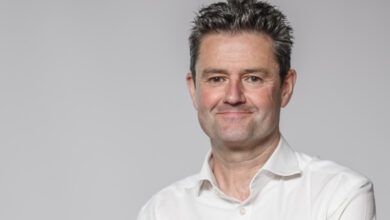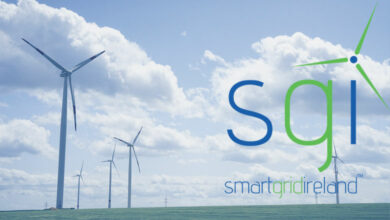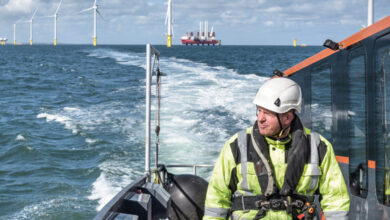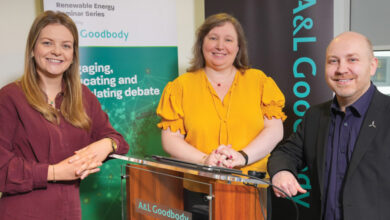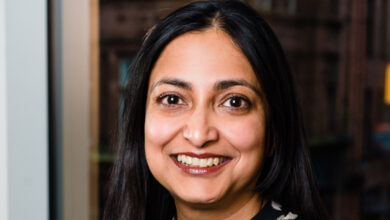Renewable energy: think Denmark
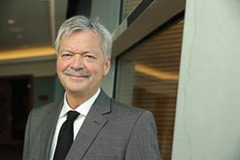 Finn Mortensen, Executive Director of Denmark’s State of Green, outlines Denmark’s progress towards independence from fossil fuels.
Finn Mortensen, Executive Director of Denmark’s State of Green, outlines Denmark’s progress towards independence from fossil fuels.
Finn Mortensen, Executive Director of Denmark’s State of Green, has set out the background to current energy policy in Denmark, which includes the aim of full independence from fossil fuels by 2050.
Since the early 1970s, there have been three main elements to Danish energy policy. The first has been to increase security of supply. Secondly, to increase economic growth and to create new sustainable jobs. The third part has been to reach various EU targets around greenhouse gas emissions.
Denmark was hit hard during the first oil crisis in 1973 as it was 99 per cent dependent on imported energy and imported 95 per cent of its oil solely from Saudi Arabia. Around that time, there was also a lot of public discussion about pollution and in response the Danish Parliament decided on a new energy policy focusing on renewable energy and energy efficiency.
Since then, there has been a broad political consensus on energy policy, typified by very long energy agreements of up to 20 to 30 years that have not changed when the Government changed. The result has been a decoupling of economic growth and energy use. Since 1980, the Danish economy has grown by 80 per cent and over the same period energy consumption has remained unchanged. The national energy bill constituted 14 per cent of GDP in 1973 and today it is 5-6 per cent of GDP.
“That goes to show that you can have economic growth year by year and not increase your total energy consumption if you choose such a focused approach,” Mortensen commented. The focus has been on renewables and energy efficiency and has taken both a “carrot and stick approach” with very high energy taxes. Today Denmark is one of the countries in the EU with the lowest electricity production prices but once the carbon taxes are added in, it has one of the highest. The carrot consists of economic subsidies to households and businesses to improve energy efficiency.
The latest Danish energy agreement, published in March 2012, is characterised by its ambitious scope, broad political agreement and long time horizon. The new policy has a target of 100 per cent renewable energy in the energy and transport sectors by 2050. It also has a target of a 50 per cent reduction of energy consumption in existing buildings by 2050 compared to 2013 levels. It also sees coal phased out by 2035 for both for heating and power generation.
At present, 27 per cent of final energy demand comes from renewables. In 2014, the Government announced the goal of becoming fossil fuel-independent by 2050. To achieve this, there are targets along the way including the following ambitious targets for 2020:
• 35 per cent of renewable energy in final energy consumption;
• 50 per cent of electricity power to be supplied from wind;
• a 7.5 per cent reduction in gross energy consumption compared to the 2010 level; and
• a 34 per cent reduction in greenhouse gas emissions compared to the 1990 level.
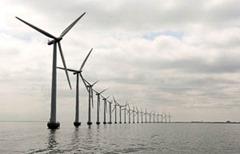 He added: “There are a number of challenges to these targets. This transition has had to take place in a relatively weak economic climate which has been challenging for business and industry.” Against such a backdrop, there were concerns that high energy prices were making Danish industry less competitive and in 2014 there was a new agreement that allowed energy intensive industries some rebate on their energy taxes.
He added: “There are a number of challenges to these targets. This transition has had to take place in a relatively weak economic climate which has been challenging for business and industry.” Against such a backdrop, there were concerns that high energy prices were making Danish industry less competitive and in 2014 there was a new agreement that allowed energy intensive industries some rebate on their energy taxes.
“According to the IEA, fossil fuels will become expensive irrespective of shale gas,” Mortensen observed. “There will be a tremendous need for a stable energy supply in the future and also resources, not just fossil fuels, are becoming more and more scarce – which will increase the focus on efficiency.”
From a Danish point of view, the sector is increasingly important in terms of jobs and from an export point of view. Exports of green energy technology have increased by approximately 10 to 15 per cent every year throughout the economic crisis while exports of ordinary goods have remained flat. Today green energy technology constitutes a greater proportion of Danish exports than it did four years ago, at €5 billion.
“We believe that our story,” he affirmed, “and the results we have seen in the past 40 years prove that green business is good business.”
Wind power
Wind plays a key role in electricity production in Denmark with a total capacity of 4.8 GW – of which 3.5GW is offshore. This is planned to be increased by another 1.5GW by 2020, two-thirds of which will also be offshore. In terms of jobs, 28,000 people are employed directly in the wind power sector in Denmark.
On the issue of public acceptance, a recent opinion poll in Denmark found that more than 90 per cent of all Danes are of the opinion that Denmark should continue building more wind turbines in the future. 85 per cent of those surveyed also agreed that it could be ‘in their back yard’.
In another survey of people living close to existing wind farms, 81 per cent saw no problem in being a neighbour to a wind turbine. “Why is that? You may ask,” Mortensen remarked. “I think it goes back 20 to 30 years. In the late 1980s and early 1990s, we had a lot of public support for wind projects.” This was seen in the local support from farmers and small co-ops which were putting up turbines themselves and is now reflected in the legislation.
At least a 20 per cent value of the project must support people living in the neighbourhood, up to 4.5km away from the wind turbine. The latest available figures show that close to 100,000 Danes have invested in a wind turbine in their neighbourhood.
State of Green
State of Green is a public-private partnership owned jointly by the Danish Government and the four major business organisations. The organisation’s role is to showcase Denmark as a green nation and to attract investment to Denmark.
State of Green covers 10 different sectors where Denmark has key positions, with the number one position being wind power. To support these 10 sectors, the State of Green has a number of activities, including a website which acts as a platform to showcase all organisations involved (www.stateofgreen.com). The website profiles around 500 companies and offers “concrete solutions” to people looking for green solutions from China and elsewhere; it receives around 25,000 visitors each month “with so many from China that there is now a Chinese version”.
The organisation also runs tours which invite visitors to see what kind of solutions are available. These host 1,500 international visitors each year, including business-to-business visitors. All visits start at the House of Green – an interactive visitor and exhibition centre which showcases all Danish green solutions.

